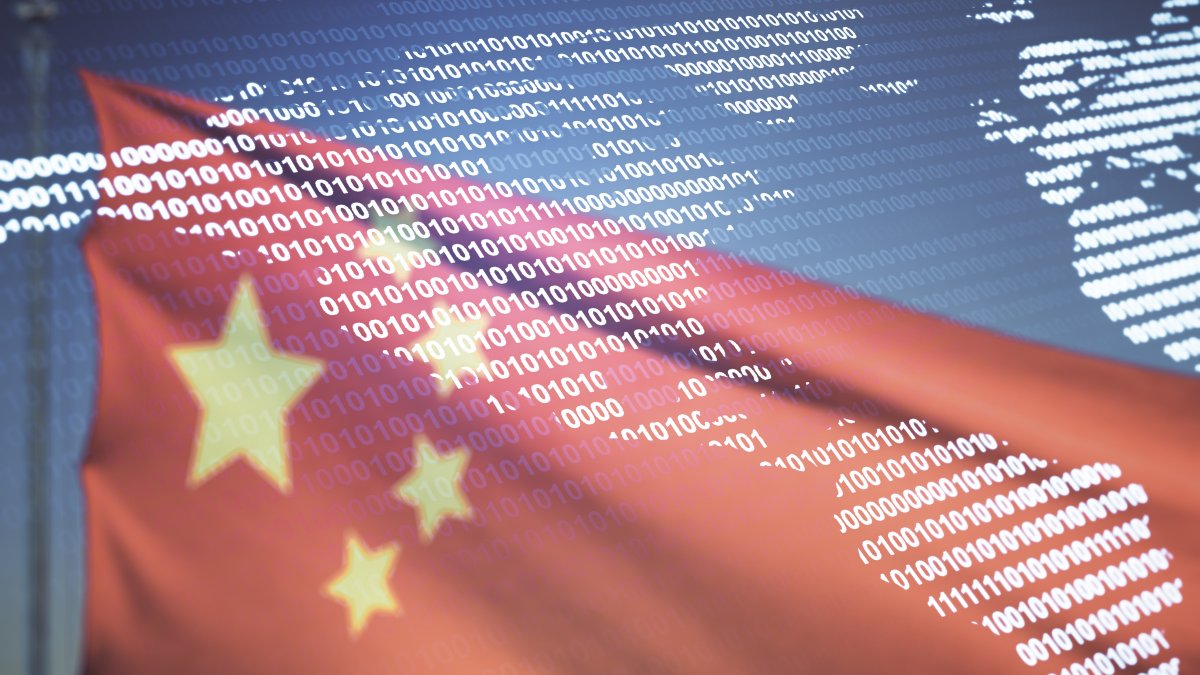The New SEP Powerhouse: How China is Shaping Global Patent Disputes

By Kirti Gupta and Mark Cohen
As 5G cellular standards continue to connect billions of smartphones, automobiles, and Internet of Things (IoT) devices, the licensing of standard essential patents (SEPs) on Fair, Reasonable and Non-discriminatory (FRAND) licensing terms has emerged as a key interest of businesses and policymakers worldwide. SEPs represent tens of billions of dollars in economic value, while the standards they comprise are key to unlocking the next generation of critical and emerging technologies such as 6G communications and autonomous vehicles.
Accordingly, governments have closely scrutinized SEPs and considered new policies, ultimately concluding that reliance on courts to resolve licensing disputes is the preferred approach in current circumstances. For example, the European Parliament recently abandoned a long-debated proposal to regulate SEPs through an out-of-court licensing framework, reaffirming the role of European courts in resolving such disputes. Courts in the United Kingdom and European Union (EU) have issued key decisions in recent years that continue to shape global SEP jurisprudence, addressing issues such as jurisdiction, willingness, and confidentiality. In the United States, in 2022 the U.S. Patent and Trademark Office and Department of Justice stepped back from setting SEP-specific rules. Courts instead generally rely on traditional legal principles, evaluating each case based on the specific FRAND commitments, recognizing the diversity across SEPs and different Standards Development Organizations (SDOs).
Meanwhile, China is becoming an important and noteworthy jurisdiction for the resolution of both domestic and global SEP disputes, challenging traditional patent regimes in the United States, United Kingdom, and EU. In particular, the 2023 decision by the Chongqing court in Nokia v. Oppo marked a significant shift by establishing the first global licensing rates for SEPs from China, while the Supreme People’s Court (SPC) has ruled that Chinese courts have the authority to set global FRAND rates for SEP pools, e.g., in TCL v. Access Advance, including for foreign implementers of pools.
China’s growing SEP jurisprudence is accompanied by significant concerns over transparency, with limited public access to court rulings and anonymized decisions impeding external analysis. These trends raise broader questions about industrial policy, global regulatory alignment, and potential rebalancing of economic interests in SEP licensing.
As Chinese companies invest heavily in research & development (R&D) and expand their SEP portfolios, China’s legal strategies also reflect a broader ambition to transition from net licensee to net licensor in the global technology ecosystem. Such a shift has also begun to take place in other technological areas, such as biotechnology. U.S., UK, and European Courts need to take note to inform the priorities for their own jurisprudence, while industry stakeholders and practitioners need to adapt to the impact of these decisions in China and beyond.
This article explores key developments that underscore China’s increasingly assertive legal posture, including its expanded use of anti-suit injunctions, landmark rulings on global royalty rate-setting, and the evolving jurisdictional reach of its courts over international SEP disputes.
Key Trends from China’s Jurisprudence on SEPs
Use of Antisuit Injunctions
In recent years, China had increasingly employed antisuit injunctions (ASIs) as a strategic tool in patent disputes, particularly in cases involving SEPs. These injunctions, issued by Chinese courts, prohibit parties from pursuing or enforcing litigation or injunctions in foreign jurisdictions that may interfere with ongoing proceedings in China. Chinese courts have issued ASIs in several SEP cases, including Xiaomi v. Interdigital in the Wuhan Intermediate People’s Court, Oppo v Sharp in the Shenzhen Intermediate People’s Court, Samsung v Ericsson in the Wuhan Intermediate People’s Court, and ZTE v. Conversant in the Shenzhen Intermediate People’s Court.
The use of ASIs reflects China’s growing influence in global intellectual property (IP) litigation and its courts’ willingness to assert jurisdiction in cross-border disputes. Chinese courts have warranted these orders as necessary to preserve judicial authority and ensure efficient resolution of cases, especially where global licensing negotiations are involved. However, this practice has sparked tension with foreign courts and raised concerns about sovereignty of national courts and territoriality of IP rights, forum shopping, and international comity. In 2022, the EU took initial steps towards filing a case at the World Trade Organization (WTO) objecting to China’s allegedly anticompetitive practices and demanding transparency. The decision of the WTO panel in early 2025 held that China had not fully satisfied certain transparency obligations of the Agreement on Trade-Related Aspects of Intellectual Property Rights (TRIPS) with respect to both publishing “final judicial decisions” of “general application” or to respond to a written requests for information by the EU of China of the type set forth in TRIPS Article 63.1. The WTO panel also concluded that China’s ASI policies weren’t inconsistent with the TRIPS Agreement. This decision has since been appealed by both the EU and China.
Global Rate Setting for SEPs Licensing Royalties
In November 2023, the Chongqing court issued a landmark ruling in the global dispute between Oppo and Nokia, marking the first time a Chinese court set global royalty rates for SEPs, including a global aggregate rate for 4G and 5G smartphones. The court also signaled the possibility of lowering royalty rates in China by applying discounted rates for domestic licensing. Notably, it rejected Nokia’s request to assess the “actual” essentiality of SEPs through qualitative analysis. Instead, the court based its decision on both granted patents and pending applications—thus encouraging a patent counting approach as more recent entrants in technology standards rapidly expand their SEP portfolios. There have been several other cases where the Chinese courts have determined that they have global jurisdiction over SEP rate setting. Another notable example is Oppo v. Sharp, where the SPC upheld a lower court ruling affirming jurisdiction over the dispute, affirming Sharp’s subsidiary named ScienBizIp Japan—which participated in licensing negotiations—as an appropriate defendant at this stage in the case, and leaving its claims that it is not the patentee and it is unrelated to the dispute in the case to substantive review by the trial court. The SPC emphasized that the negotiations occurred in China, thus asserting jurisdiction to set global rates.
More recently, China’s SPC has also affirmed that Chinese courts have jurisdiction to determine global SEP royalty rates for foreign patent pools, regardless of where the implementers are situated. This played out in the TCL v Access Advance case, which centers on a U.S.-based licensing administrator, Access Advance, managing a patent pool for HEVC technologies. Although the SPC’s rate-setting decision has not yet been officially released, the case reinforces the precedent set in Oppo v. Nokia, extending China’s judicial reach to global patent disputes, including those involving patent pools.
It should be noted that the first court to determine global FRAND rates was in the landmark Unwired Planet vs. Huawei decision where the UK High Court determined the terms of a FRAND license covering not only UK SEPs at issue, but also foreign patents, marking a significant development in the legal landscape of FRAND royalty rates. Courts in France have also indicated some willingness to set global FRAND royalty rates in this manner in the past. However, U.S. courts have set global FRAND rates only when both parties have requested that they do so. More recent court rulings in the EU have also displayed a more restrained approach in cross border enforcement of SEPs. For example, in the UK High Court’s decision in Tesla v. InterDigital, the court determined that it could not set a global royalty rate for a patent pool.In this case, Tesla sought a FRAND determination for the 5G patent pool administered by Avanci, which includes patents from multiple licensors, such as InterDigital. However, the High Court dismissed Tesla’s claim, stating that it did not have jurisdiction to set a global FRAND rate for the entire pool. In Germany, in as Access Advance v. Vestel, the Dusseldorf District Court did not assess or set a global royalty rate for the pool (likely, because the court found that the pool’s duplicate royalty policy lacked a direct legal obligation to prevent licensors from receiving duplicate royalties when their patents were licensed in multiple pools). In reaction to this trend, the EU has filed a second WTO case that is now pending regarding Chinese global rate setting practices.
Transparency of Judicial Decisions
One of the persistent challenges in analyzing China’s SEP litigation landscape is the limited transparency of its judicial system. Unlike the United States, which uses the Public Access to Court Electronic Records (PACER) system, China does not offer a comprehensive, open-access system for reviewing final and/or non-final court decisions. This lack of data has deepened with the increasing practice of publishing rulings in anonymized formats or outside of official channels. For instance, in the SPC’s appeal decision in Ningbo Ketian Metals v. Hitachi Metals—which overturned a lower court’s finding of a de facto essential facility for non-SEP patents—the judgment was initially released under a generic, “John Doe”-style identifier, obscuring key details of the case. Similarly, rulings in high-profile cases such as Lenovo v. Nokia, where the court denied an ASI, are not available through the SPC’s official case database, Wenshu, and may only be accessible through alternative channels. For researchers studying the IP and SEP litigation landscape trends, the changing names of cases, their publication or summary through non-official channels, or subsequent withdrawals from publication can make it exceedingly difficult to point to one final official version of a case.
The need for judicial transparency has drawn international attention. It was a central point in the EU’s case against China at the WTO, where the EU argued that lack of transparency hinders fair trade and legal predictability. In contrast, the United States filed a brief siding with China, asserting that WTO members are not obligated to disclose internal legal policy documents or deliberations.
Changing Winds in China: From Net Licensee to Net Licensor
Some commentators have suggested that China’s approach to SEP litigation and its assertion of global jurisdiction may reflect broader industrial policy objectives and changing business landscape. While China has historically been a net licensee of SEP royalties—given that majority of global manufacturing for mobile and IoT devices takes place within its borders—this balance may be shifting.
Chinese technology giants such as Huawei, ZTE, and others have been heavily investing in R&D, significantly expanding their patent portfolios in 5G and other next-generation standards. These companies are not only increasing their contributions to global standard-setting but are also becoming more proactive in monetizing their IP through international licensing efforts. This evolving dynamic may influence how China continues to shape its legal and policy framework around SEPs.
Conclusion
China’s growing influence in global SEP disputes marks a significant shift in the landscape of international patent law. With its recent landmark decisions, including those in Oppo v. Nokia and TCL v. Access Advance, Chinese courts are asserting jurisdiction over the setting of global FRAND royalty rates, a move that challenges traditional patent regimes in the United States, United Kingdom, and EU. While this strengthens China’s role as a key extra-territorial player and norm setter in SEP litigation, it also raises important issues surrounding transparency, as the limited public access to judicial decisions and the anonymization of case rulings hinder broader analysis and international scrutiny.
Furthermore, China’s assertive legal strategies, including the use of ASIs and its evolving stance as both a net licensor and a growing R&D hub, signal a strategic push to rebalance the global patent system. As Chinese tech giants such as Huawei and ZTE expand their SEP portfolios, their growing influence will continue to shape the future of global technology standards and patent licensing, prompting other jurisdictions to adapt their policies and legal frameworks accordingly.
Addressing China’s evolving judicial positions is complicated by the evolving judicial practices of courts globally, the United States’ position not to participate in WTO appeals, and other factors. These challenges are widespread and concern jurisdictions beyond the United States and EU. Policy responses could include greater encouragement of the parties to utilize arbitration or mediation for voluntary global rate setting determinations. In addition, countries with leading SEP disputes may wish to engage in greater consultation with Chinese and third country counterparts towards greater jurisdictional and rate setting harmonization to reduce incidences of global forum shopping. Jurisdictions could also compete with each other more effectively. For example, China’s rapid adjudication of SEP disputes offers it a strategic advantage which can be addressed by accelerated judicial procedures in other countries, such as fast-track adjudication promised by the recently established Unified Patent Court (UPC) in Europe. More robust transparency goals across jurisdictions can help monitor compliance with international and bilateral IP-related agreements.
Kirti Gupta is senior adviser (non-resident) with the Renewing American Innovation Project at the Center for Strategic and International Studies in Washington, D.C. Mark Cohen is a Senior Technology Fellow at the Asia Society and a Senior Fellow at the University of Akron School of Law.
This piece was originally published on May 7th with the Renewing American Innovation Project at the Center for Strategic and International Studies in Washington, D.C.


How Europe Lost Global Biopharmaceutical R&D Leadership to the United States: Lessons for Today
